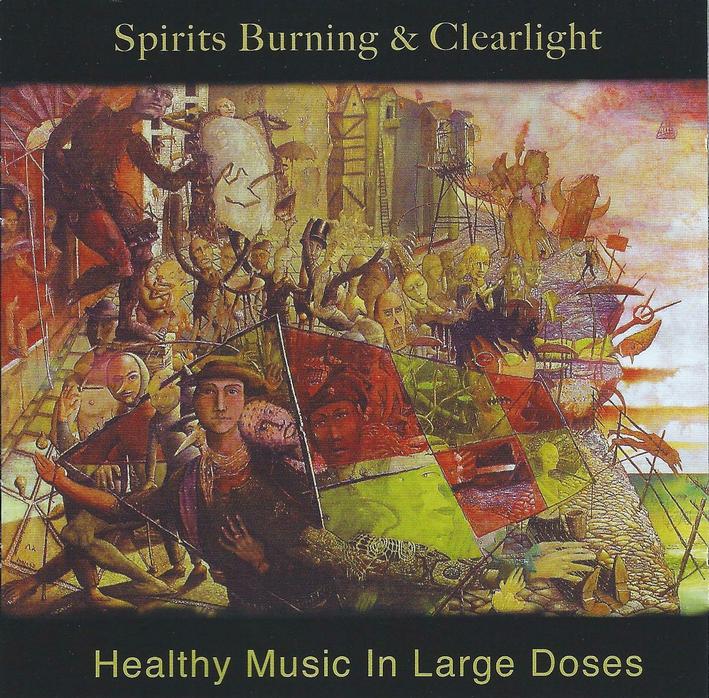 Well, this is an unexpected turn of events, even for someone like Don Falcone, who has built a whole career out of unlikely collaborations. Falcone first appeared on the mid-1990’s U.S. spacerock scene playing keyboards with Melting Euphoria on 1994’s Through The Strands Of Times, before moving on to a variety of projects, including Spaceship Eyes and Spirits Burning, who existed concurrently for a time in the late 1990’s. The first official Spirits Burning album was 1999’s New Worlds By Design, with subsequent releases including the co-credited Bridget Wishart projects Earth Born (2008) and Bloodlines (2009), and 2008’s Michael Moorcock archive-trawl Alien Injection. With their most recent album being 2011’s Behold The Action Man, a collaboration with sometime Hawkwind lyricist Roger Neville-Neil, Falcone must surely be one of the most well-connected pan-generational figures in spacerock, with work blending and crossing a multitude of styles. Clearlight, on the other hand is the vintage 1970’s symphonic progressive rock project of Frenchman Cyrille Verdeaux, a truly gifted keyboard player, around whom congregated an ever-changing array of guest stars (including members of Gong), to release a run of mainly instrumental albums, starting with 1975’s Clearlight Symphony. Verdeaux has continued to use the Clearlight name throughout the ’80’s and ’90’s, while also recording under his own name, to the extent that band and keyboard player have become virtually interchangable. The tragic death of his young son resulted in Verdeaux travelling to India, where he studied yoga and meditation, which strongly influenced his subsequent work on albums such as Ethnicolours, Messenger Of The Sun, Journey To Tantraland, and his most recent release, 2007’s Shamballa – A Journey To The Crystal World.
Well, this is an unexpected turn of events, even for someone like Don Falcone, who has built a whole career out of unlikely collaborations. Falcone first appeared on the mid-1990’s U.S. spacerock scene playing keyboards with Melting Euphoria on 1994’s Through The Strands Of Times, before moving on to a variety of projects, including Spaceship Eyes and Spirits Burning, who existed concurrently for a time in the late 1990’s. The first official Spirits Burning album was 1999’s New Worlds By Design, with subsequent releases including the co-credited Bridget Wishart projects Earth Born (2008) and Bloodlines (2009), and 2008’s Michael Moorcock archive-trawl Alien Injection. With their most recent album being 2011’s Behold The Action Man, a collaboration with sometime Hawkwind lyricist Roger Neville-Neil, Falcone must surely be one of the most well-connected pan-generational figures in spacerock, with work blending and crossing a multitude of styles. Clearlight, on the other hand is the vintage 1970’s symphonic progressive rock project of Frenchman Cyrille Verdeaux, a truly gifted keyboard player, around whom congregated an ever-changing array of guest stars (including members of Gong), to release a run of mainly instrumental albums, starting with 1975’s Clearlight Symphony. Verdeaux has continued to use the Clearlight name throughout the ’80’s and ’90’s, while also recording under his own name, to the extent that band and keyboard player have become virtually interchangable. The tragic death of his young son resulted in Verdeaux travelling to India, where he studied yoga and meditation, which strongly influenced his subsequent work on albums such as Ethnicolours, Messenger Of The Sun, Journey To Tantraland, and his most recent release, 2007’s Shamballa – A Journey To The Crystal World.
So much for the back-story. As can be expected then, Healthy Music In Large Doses is an eclectic album, which spans a number of genres. One thing to make clear at the onset is that, despite input from several one-time Hawkwind members, and Falcone’s own space-rocking past, this is definitely not a full-on spacerock experience. Rather, the music on this mainly-instrumental album is rooted in jazz, folk, psychedelic pop and even reggae. The album opens with Treasures At The Dawn Of The Century, a kind of world music piece featuring multiple synths, organ, flute and tabla. Raised On Coal And Oil, strongly features the violin of Stella Fergusson, who appears able to reach notes of such height that only dogs can hear them, interweaving with Verdeaux’s gentle piano arpeggios across seven minutes of floating and bass-driven jazz. Our Secret Cloud is a gentle, almost spiritual, piece which opens with chanted male/female vocals, moving into purely ambient territory, including what appears to be backward guitar, and closing with a reprised choral passage. Verdeaux provides spoken-word vocals – in French – over tenor and soprano sax-flavoured jazz on Infinite City, while Falcone’s percussion duties include marimba, sound eggs, finger cymbals, U.S. kitchen bell and Italian rattlesnake! Unusual percussion aside, this is truly prog rock at its most jazzy, bringing to mind latter day Soft Machine, or Bill Bruford’s Earthworks. Cyndee Lee Rule’s violin weaves its way through the Indian sitars and woodwinds of Hand Signals & Daily Horoscopes, which contains a piano passage strongly evoking the original Clearlight Symphony. The standard of musicianship here is just jaw-dropping, while never being showy. Cool Can Of Cola On The Forehead (one of the few tracks on which Cyrille Verdeaux does not play) is funky reggae, perfectly evoking the image suggested by the title. Healing Power Of Magnets sounds so close to Pink Floyd’s classic Breathe that it is a wonder Gilmour and Waters are not given a co-writing credit; the music suggesting the same feeling of melting euphoria as Dark Side Floyd (and for which Falcone named his first band). Verdeaux again steps back on the dreamy synth-led Travellin [sic] Sideways, while Falcone gets a credit for providing ocean and wind; additional synths are provided by Paul Hayles, who was briefly a Hawk and Sonic Assassin. Kingdom Of Music is another perfectly titled track, with fluttering arpeggios dancing on the wind. Michael Clare supplies dazzeling bass playing on the jazzy In Search Of Friends On The Day Of Masks, with gliss guitars by Gong associate Fabio Golfetti, who provides more of the same on the brief shimmering sound picture that is Italian Lake. The Road To Shave Ice is as baffling as its title would suggest, with Thom Evans (of Hawk associates Melodic Energy Commission) credited with “playing” wrench, umbrella and jaw harps, and Falcone contributing samples of ocean waves, Luau rhythms and chants, and gift shop instruments. Reggae-flavouring is sprinkled on album closer Bring It Down, written and sung by Gong’s Daevid Allen, and certainly sounding like it, with eco-warning lyrics – “Telecommunication sits in castles made of sand” – contrasting with the jolly melodies and tenor saxes of Purjah.
Healthy Music In Large Doses does pretty much what it says on the tin, and sounds much like you would expect from a collaboration of minds that released Found In Nature and Clearlight Symphony. Spacerock it most certainly isn’t, but seekers of a gentle yet funky uplifting panacea will find much to enjoy here, and in most generous doses too!
For further information on Spirits Burning, go to http://www.spiritsburning.com or http://www.myspace.com/spiritsburning
Further information on Clearlight can be found at http://www.clearlight888music.com
Reviewed by Pat Albertson

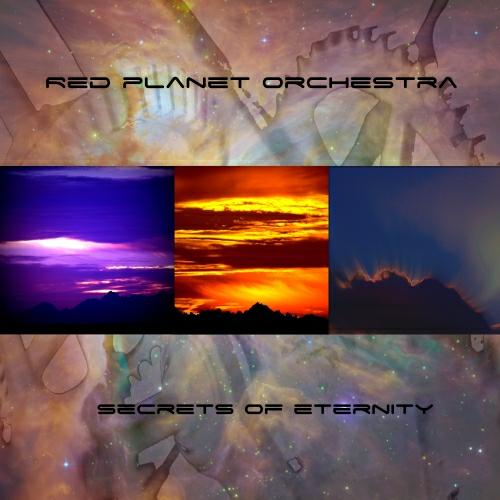 Hot on the heels of their debut release, Aurora Symphony, Red Planet Orchestra is back with Secrets of Eternity. Red Planet Orchestra is the UK based duo of Vincent Rees and Peter Smith, who were the same musicians who created the T30 Control albums Blade Of The Sun (2003) and Hollow Earth (2006). Secrets Of Eternity consists of 4 tracks – two lengthy pieces and two shorter ones.
Hot on the heels of their debut release, Aurora Symphony, Red Planet Orchestra is back with Secrets of Eternity. Red Planet Orchestra is the UK based duo of Vincent Rees and Peter Smith, who were the same musicians who created the T30 Control albums Blade Of The Sun (2003) and Hollow Earth (2006). Secrets Of Eternity consists of 4 tracks – two lengthy pieces and two shorter ones. Ask the casual music listener what they consider to be the sound of the ’90’s, and the most likely answers you get will be a combination of grunge and alt rock, or techno and Britpop. Few indeed would be familiar with what was then known as the “new wave of US spacerock”, the isolated strands of which were brought together to a certain extent by the legendary Cleopatra label, which released a number of compilations featuring bands like Farflung, Pressurehed, Alien Planetscapes, Anubian Lights and Architectural Metaphor, performing either their own material or classic rock covers of the likes of King Crimson, Pink Floyd and Hawkwind. Buried deep underground, these bands helped to inspire a third and current generation of spacerock bands including Oresund Space Collective, Secret Saucer, Litmus, First Band From Outer Space and plenty more who are still going strong today. Although Cleopatra Records is still a going concern, things have been rather quiet for most of those American bands that kept the flame alive in the ’90’s. The release of Architectural Metaphor’s Everything You Know Is Wrong is therefore a most welcome surprise, a bit like finding a gold nugget amongst rubble thought picked clean.
Ask the casual music listener what they consider to be the sound of the ’90’s, and the most likely answers you get will be a combination of grunge and alt rock, or techno and Britpop. Few indeed would be familiar with what was then known as the “new wave of US spacerock”, the isolated strands of which were brought together to a certain extent by the legendary Cleopatra label, which released a number of compilations featuring bands like Farflung, Pressurehed, Alien Planetscapes, Anubian Lights and Architectural Metaphor, performing either their own material or classic rock covers of the likes of King Crimson, Pink Floyd and Hawkwind. Buried deep underground, these bands helped to inspire a third and current generation of spacerock bands including Oresund Space Collective, Secret Saucer, Litmus, First Band From Outer Space and plenty more who are still going strong today. Although Cleopatra Records is still a going concern, things have been rather quiet for most of those American bands that kept the flame alive in the ’90’s. The release of Architectural Metaphor’s Everything You Know Is Wrong is therefore a most welcome surprise, a bit like finding a gold nugget amongst rubble thought picked clean.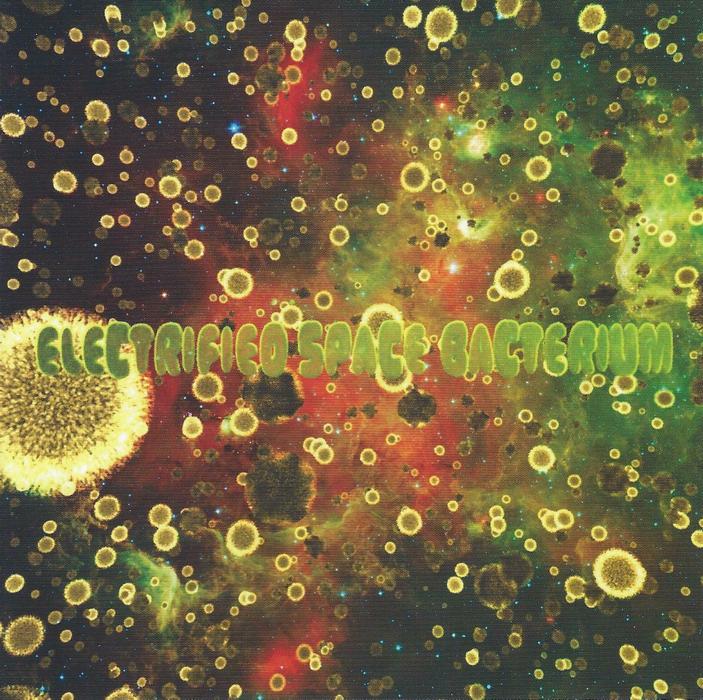 Ambient music can so easily fall into the trap of long, repetitive and frankly, quite boring swashes of synth pads. There’s all sorts of that kind of stuff out there. So when something like Dadirri’s Electrified Space Bacterium comes along, it is a welcome shock to the system. This is ambient music that is alive, complex and stimulating. Not that you can’t just kick back and chill out to it, but it is the kind of ambient music that Brian Eno described, music that can just as easily fade into the background as it can grab your attention and make you really listen.
Ambient music can so easily fall into the trap of long, repetitive and frankly, quite boring swashes of synth pads. There’s all sorts of that kind of stuff out there. So when something like Dadirri’s Electrified Space Bacterium comes along, it is a welcome shock to the system. This is ambient music that is alive, complex and stimulating. Not that you can’t just kick back and chill out to it, but it is the kind of ambient music that Brian Eno described, music that can just as easily fade into the background as it can grab your attention and make you really listen.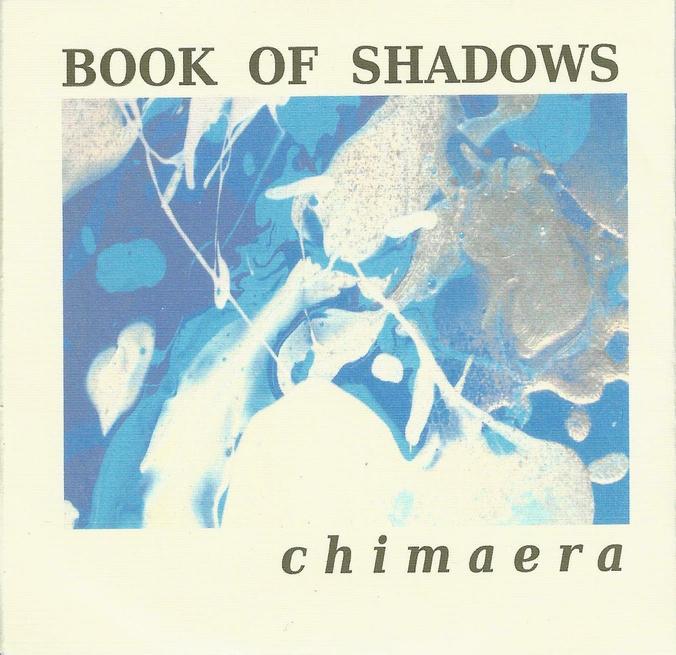 The latest from Austin, Texas based Book Of Shadows features 7 tracks and nearly 80 full minutes on a limited edition CDR of only 150 individually numbered copies from Kendra Steiner Editions. As usual, the lineup of musicians can vary from one track to the next, with mainstays Carlton and Sharon Crutcher being the constants.
The latest from Austin, Texas based Book Of Shadows features 7 tracks and nearly 80 full minutes on a limited edition CDR of only 150 individually numbered copies from Kendra Steiner Editions. As usual, the lineup of musicians can vary from one track to the next, with mainstays Carlton and Sharon Crutcher being the constants. The Last Flight of The Hope Dempsey album – by the duo of Brendan McCusker and Andy Samford – calling themselves “The Rendlesham Forest Incident”, is a suitably hard rock chugger modeled after the primordial space rock band, Hawkwind. In fact, with the first track, Time Between Times; some might say it’s modeled a little TOO closely on Hawkwind. That is, the track lifts much from their classic Master of the Universe. That said, despite the ’70’s era spacerock references one often hears in the album; after a complete listen, the guys can be forgiven, because they transcend all that with their obvious enthusiasm for the genre AND good, tight musicianship. And after all, isn’t all genre music a retelling of the same original innovation over and over? This is especially true of spacerock; we fans eat that shit up – the phasing, the warbling tone generators, and guitar freakouts, etc. etc. So if, as I say, it’s done as enthusiastically – as it is with this – and with talent to burn, all is forgiven! Fans familiar with Samford and McCusker will recognize them from their previous bands, Telestrion, and Pickman’s Model, respectively.
The Last Flight of The Hope Dempsey album – by the duo of Brendan McCusker and Andy Samford – calling themselves “The Rendlesham Forest Incident”, is a suitably hard rock chugger modeled after the primordial space rock band, Hawkwind. In fact, with the first track, Time Between Times; some might say it’s modeled a little TOO closely on Hawkwind. That is, the track lifts much from their classic Master of the Universe. That said, despite the ’70’s era spacerock references one often hears in the album; after a complete listen, the guys can be forgiven, because they transcend all that with their obvious enthusiasm for the genre AND good, tight musicianship. And after all, isn’t all genre music a retelling of the same original innovation over and over? This is especially true of spacerock; we fans eat that shit up – the phasing, the warbling tone generators, and guitar freakouts, etc. etc. So if, as I say, it’s done as enthusiastically – as it is with this – and with talent to burn, all is forgiven! Fans familiar with Samford and McCusker will recognize them from their previous bands, Telestrion, and Pickman’s Model, respectively.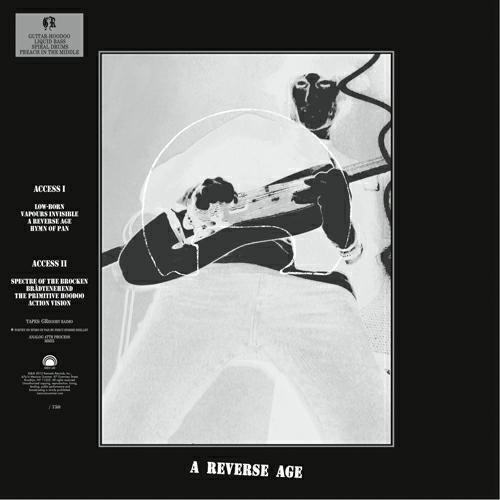 GR is French guitarist (and multi-instrumentalist) Greg Raimo, who I first became of aware of through his guitar/bass/drums trio Gunslingers. Imagine a marriage of power-psych-punk-metal trio and Acid Mothers Temple at their most crazed and you might get something like Gunslingers. Raimo’s guitar is a blistering assault on the senses, and backed by a relentlessly pummeling bass/drums rhythm section he rips and shreds, laying waste to the sonic landscape. And his vocals are as punishing as his guitar, sounding like a cross between Johnny Rotten and Damo Suzuki. Gunslingers released two albums, the No More Invention debut in 2008 and Manifest Zero in 2010, and I even got to see them perform live when they toured the U.S. Greg then ventured out on his own, releasing the GR and Full Blown Expansion LP in 2010, on which he plays all the instruments, and now A Reverse Age, credited simply to “GR”, released last year. (The promo sheet mentions a collaborative EP with Michael Yonkers that I’ve not heard.)
GR is French guitarist (and multi-instrumentalist) Greg Raimo, who I first became of aware of through his guitar/bass/drums trio Gunslingers. Imagine a marriage of power-psych-punk-metal trio and Acid Mothers Temple at their most crazed and you might get something like Gunslingers. Raimo’s guitar is a blistering assault on the senses, and backed by a relentlessly pummeling bass/drums rhythm section he rips and shreds, laying waste to the sonic landscape. And his vocals are as punishing as his guitar, sounding like a cross between Johnny Rotten and Damo Suzuki. Gunslingers released two albums, the No More Invention debut in 2008 and Manifest Zero in 2010, and I even got to see them perform live when they toured the U.S. Greg then ventured out on his own, releasing the GR and Full Blown Expansion LP in 2010, on which he plays all the instruments, and now A Reverse Age, credited simply to “GR”, released last year. (The promo sheet mentions a collaborative EP with Michael Yonkers that I’ve not heard.)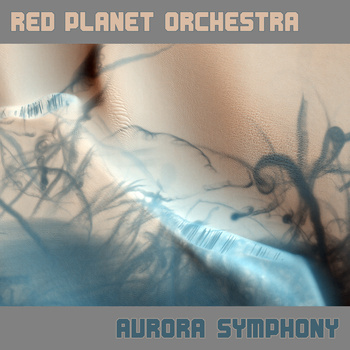 Red Planet Orchestra is the UK based duo of Vincent Rees and Peter Smith, who were the same musicians who created the T30 Control albums Blade Of The Sun (2003) and Hollow Earth (2006). In my review of Blade Of The Sun I summarized it as appealing to fans of early 70’s German electronica, ambient/soundscape music, and all things SPACE.
Red Planet Orchestra is the UK based duo of Vincent Rees and Peter Smith, who were the same musicians who created the T30 Control albums Blade Of The Sun (2003) and Hollow Earth (2006). In my review of Blade Of The Sun I summarized it as appealing to fans of early 70’s German electronica, ambient/soundscape music, and all things SPACE. Oceanfire is the solo project of UK multi-instrumentalist Keith Hill. Hill is notably in the bands Signified and Civilian Zen, and has worked with not only various Hawkwind alumni in the past, but has also done work with spacerocker Vert:x. The music of Oceanfire is much closer in style to the electronic rock of his Civilian Zen project than it is to the alt-metal crunch of Signified, but he does inject a little heaviness into things as well. Exit-Rejuvenation is Hill’s follow up to a pair of EP’s, A Set of Songs Parts 1 & 2 that he released in late 2012/early 2013.
Oceanfire is the solo project of UK multi-instrumentalist Keith Hill. Hill is notably in the bands Signified and Civilian Zen, and has worked with not only various Hawkwind alumni in the past, but has also done work with spacerocker Vert:x. The music of Oceanfire is much closer in style to the electronic rock of his Civilian Zen project than it is to the alt-metal crunch of Signified, but he does inject a little heaviness into things as well. Exit-Rejuvenation is Hill’s follow up to a pair of EP’s, A Set of Songs Parts 1 & 2 that he released in late 2012/early 2013.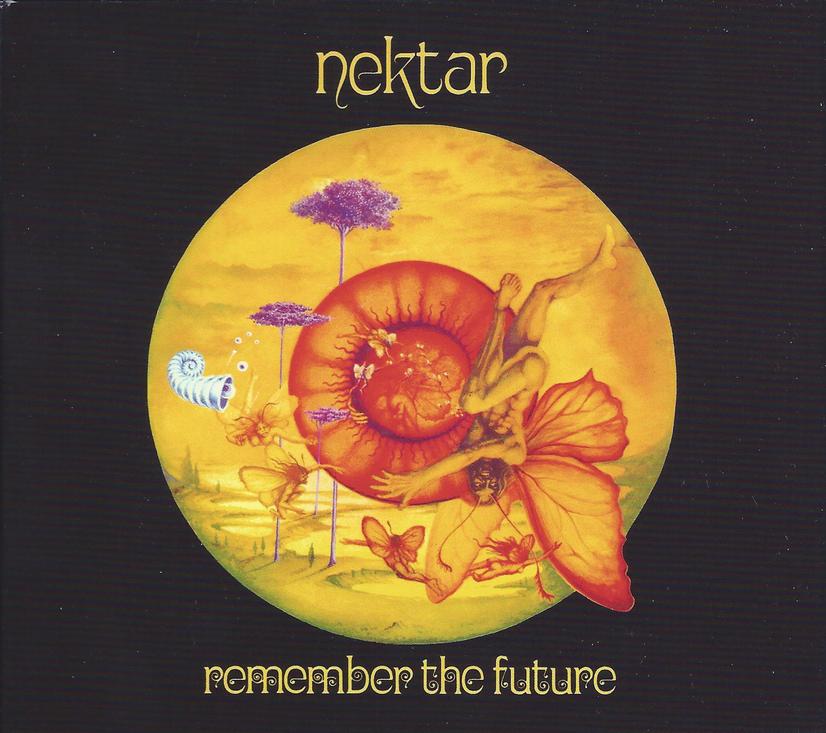 Hot on the heels of reissuing Journey To The Centre Of The Eye, Cleopatra Records’ Purple Pyramid subdivision has released a 2-CD reissue of Remember the Future, perhaps Nektar’s most popular album. Released in 1973 (’74 in the US), Remember the Future was Nektar’s third album and the first for which they toured the US. No strangers to concepts, Remember the Future was their most sprawling yet, consisting of Parts 1 & 2 of the title track across both sides of the LP. Mind expansion and new awareness were the ultimate themes of Journey To The Centre Of The Eye, and these concepts are more fully formed on Remember the Future. The album tells the story of Bluebird, a visitor to what we presume is Earth, who is shunned by the natives because of his appearance. No surprises there. Bluebird eventually encounters a blind boy and tells his story by way of visions he places in the boy’s mind. Bluebird then gifts the boy with new eyes and wisdom. Pretty trippy, huh? 1973 indeed. I didn’t discover the album until later in the decade but this was precisely the kind of stuff I was ripe for.
Hot on the heels of reissuing Journey To The Centre Of The Eye, Cleopatra Records’ Purple Pyramid subdivision has released a 2-CD reissue of Remember the Future, perhaps Nektar’s most popular album. Released in 1973 (’74 in the US), Remember the Future was Nektar’s third album and the first for which they toured the US. No strangers to concepts, Remember the Future was their most sprawling yet, consisting of Parts 1 & 2 of the title track across both sides of the LP. Mind expansion and new awareness were the ultimate themes of Journey To The Centre Of The Eye, and these concepts are more fully formed on Remember the Future. The album tells the story of Bluebird, a visitor to what we presume is Earth, who is shunned by the natives because of his appearance. No surprises there. Bluebird eventually encounters a blind boy and tells his story by way of visions he places in the boy’s mind. Bluebird then gifts the boy with new eyes and wisdom. Pretty trippy, huh? 1973 indeed. I didn’t discover the album until later in the decade but this was precisely the kind of stuff I was ripe for.